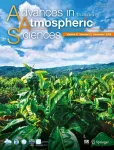(Press-News.org) In certain parts of the United States, especially Appalachia, New England and the Northwest, the ability of residents to prepare for and respond to flooding is being undercut on three different levels.
This is according to a new study from the University of Michigan's School for Environment and Sustainability.
"It's a very worrying confluence that does keep me up," said Joshua Newell, a professor with the school's Center for Sustainable Systems and senior author of the study. "The communities that are most at risk of catastrophic flooding are the least prepared and the least likely to get prepared."
He has termed this three-fold susceptibility "triple exposure."
The first factor in this exposure is that the Federal Emergency Management Agency has underestimated the flooding risks in many counties across the country. Secondly, markers of social vulnerability, such as low income and mobility limitations, hamper the ability of individuals to take preventative measures, evacuate before floods and recover and rebuild after a flooding event.
Lastly, in certain communities, there's a pervasive skepticism that climate change is happening at all.
"It's not just the flooding, it's not only that it's affecting socially vulnerable populations, there is also an extra layer of vulnerability in that people are unprepared and unaware of the risk they are facing," said Dimitrios Gounaridis, a U-M research specialist and co-author of the new report.
Geographically, the team found that triple exposure was most pronounced in Appalachia, an area devastated by flooding following Hurricane Helene. The team's study was in the final stages of review before its publication when Helene made landfall in the U.S.
"Unfortunately, this paper has become timely," Gounaridis said.
The areas hit hardest by the floods caused by Hurricane Helene, including Asheville, North Carolina, were just west of the Appalachian triple exposure hotspot the researchers found. But the team said the disaster underscores how dangers become magnified when people don't fully appreciate their risks.
"Asheville was supposed to be a climate haven," Newell said—a location that would be insulated from the worst consequences of climate change.
"It's clear from our paper that it, or at least the region around it, is not. I think this really highlights the need for preparation in these high-risk areas and the urgency of doing that work."
To identify areas facing triple exposure, the team combined what Gounaridis characterized as dozens of layers of data. That included results from a national Yale University survey on climate attitudes, data from a federal social vulnerability index and household level flood risk estimates from the nonprofit First Street Foundation, which is regarded as more modern and robust than FEMA's.
This not only revealed areas facing outsized flood risks, but also opportunities to help communities in those regions bolster their preparedness and resilience, said Wanja Waweru, who worked on the project while earning her master's degree at U-M.
"That could be education campaigns to help folks better understand climate change or policies that help lift people out of poverty so they can have the extra funds in their pockets to evacuate or rebuild after a disaster," she said.
"I think agencies and organizations in these areas should continue their efforts to help folks understand their risks. Hopefully, this research can illuminate ways to meet them where they are."
END
A 'worrying confluence' of flood risk, social vulnerability and climate change denial
2024-10-23
ELSE PRESS RELEASES FROM THIS DATE:
Saving the bats: Researchers find bacteria, fungi on bat wings that could help fight deadly white-nose syndrome
2024-10-23
Saving the bats: Researchers find bacteria, fungi on bat wings that could help fight deadly white-nose syndrome
Hamilton, ON, Oct. 23, 2024 – Bacteria and fungi from the wings of bats could play a significant role in saving them from white-nose syndrome (WNS), a fungal disease affecting the skin of wings and muzzle, which has nearly wiped out vulnerable bat populations across North America.
Researchers at McMaster University have gathered and analyzed samples from the community of microorganisms, or microbiome, on the wings of several bat species ...
Project Cure CRC awards nearly $5 million in research funding
2024-10-23
Washington, D.C. – October 23, 2024 – Project Cure CRC, the breakthrough research fund of the leading nonprofit Colorectal Cancer Alliance (Alliance), has announced five new awardees of funds to advance urgent science in the colorectal cancer space. To date, 10 research grants have been awarded for a grand total of almost $5 million in critically needed funding.
Recipients of the most recent grants totaling almost $1 million include investigators from the University of California, San Francisco, Indiana University, University of Saskatchewan, Georgetown University, and Anglia Ruskin University. ...
New parasite discovered amid decline of California’s unique Channel Island fox
2024-10-23
California’s Channel Islands are home to the Channel Island fox (Urocyon littoralis), one of the smallest and most cherished species of island fox in the United States. Although no longer on the Endangered Species List, they remain a species of special concern due to their ecological importance.
In the 1990s, the San Miguel Island fox nearly went extinct, dropping to just 15 individuals. A recovery program restored their numbers by 2010. However, from 2014 to 2018, the population fell to 30% of its peak right after a new acanthocephalan parasite, commonly known as thorny-headed worms, was identified on the island. This also occurred while a multi-year draught heated San ...
Chemical Insights Research Institute publishes comprehensive guidance to protect community health impacted by wildland-urban interface fire events
2024-10-23
ATLANTA, Oct. 23, 2024 -- Chemical Insights Research Institute (CIRI) of UL Research Institutes has joined with UL Standards and Engagement to release new guidance for communities at risk for fires in wildland-urban interface (WUI) areas. An estimated 70,000 communities and 45 million residential buildings are at risk of destruction caused by wildfires. Additionally, WUI fires pose significant health risks. The smoke emitted by WUI fires likely contains a mixture of contaminants such as combustion gases, organic and inorganic metal complexes, volatile organic compounds and numerous reaction products. WUI wildfire plumes carry the risks of ...
New concussion sign identified by Mass General Brigham & Concussion Legacy Foundation scientists could identify up to 33% of undiagnosed concussions
2024-10-23
(Boston, MA) — Concussion researchers have recognized a new concussion sign that could identify up to 33% of undiagnosed concussions. After a hit to the head, individuals sometimes quickly shake their head back and forth. Although it has been depicted in movies, television, and even cartoons for decades, this motion has never been studied, named, and does not appear on any medical or sports organization’s list of potential concussion signs. A new study, led by Concussion Legacy Foundation (CLF) CEO and co-founder Chris Nowinski, PhD, says it should.
The study, published today in Diagnostics, reveals that when athletes exhibit this movement, ...
Dehydration linked to muscle cramps in IRONMAN triathletes
2024-10-23
PULLMAN, Wash. – As athletes prepare to dive into Hawaiian waters for the first part of the IRONMAN World Championship on Oct. 26, they may want to pay a little extra attention to the water inside their bodies.
Contrary to previous research, a Washington State University-led study of three decades of the IRONMAN’s top competition found a connection between dehydration and exercise-induced muscle cramps.
Based on medical data of more than 10,500 triathletes, the study, published in the Clinical Journal of Sport Medicine, found a strong link between dehydration and participants seeking treatment for muscle cramps during the competition. ...
Study: Marshes provide cost-effective coastal protection
2024-10-23
Images of coastal houses being carried off into the sea due to eroding coastlines and powerful storm surges are becoming more commonplace as climate change brings a rising sea level coupled with more powerful storms. In the U.S. alone, coastal storms caused $165 billion in losses in 2022.
Now, a study from MIT shows that protecting and enhancing salt marshes in front of protective seawalls can significantly help protect some coastlines, at a cost that makes this approach reasonable to implement.
The new findings are being reported in the journal Communications ...
New chemical treatment reduces number of plant pores that regulate water loss
2024-10-23
Researchers from Nagoya University Institute of Transformative Biomolecules (WPI-ITbM) in Japan and their colleagues have identified and derivatized a chemical compound that effectively regulates the density of stomata in model plants. Stomata are crucial for water regulation. As the environment grows increasingly unpredictable, managing water consumption for crops during droughts through chemical methods will become increasingly important. The results of their study were published in Nature Communications.
Manipulating protein interactions using chemical compounds is revolutionizing ...
Safety and security: Study shines light on factors behind refugees’ resilience
2024-10-23
“While exposure to persecution, war and displacement is associated with high rates of psychological disorders, such as PTSD and depression, remarkably the majority of refugees, despite having gone through very difficult experiences, don’t go on to develop a psychological disorder,” says Prof. Nickerson, Director of the Refugee Trauma and Recovery Program at UNSW’s School of Psychology.
Despite this, previous research has focused on trying to understand factors that predict psychopathology or psychological distress, rather than factors that ...
Climate change no “storm in a teacup” for the tea industry: Joint initiative between the UK and China to provide climate services to help
2024-10-23
Tea is a significant global commodity, with an industry worth tens of billions of dollars and growing. However, its production—both in terms of quantity and quality—is highly sensitive to climate variations, particularly in the context of long-term human-induced global warming and its associated shorter-term impacts such as extreme weather events.
To tackle this challenge, a collaborative initiative between UK and Chinese scientists and tea industry stakeholders has been launched. This project, known as “Tea-CUP” ...







